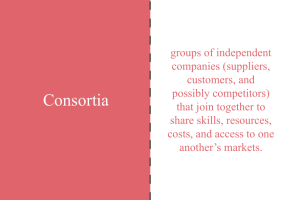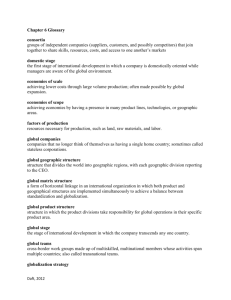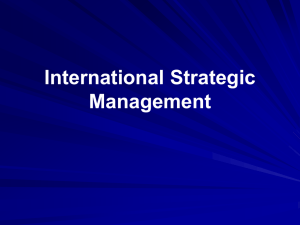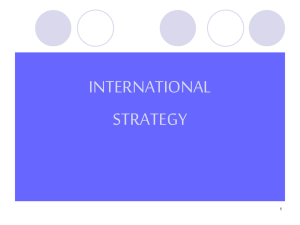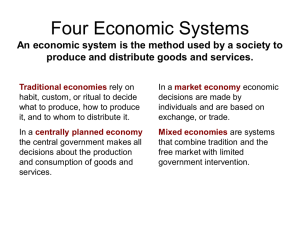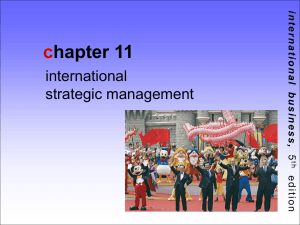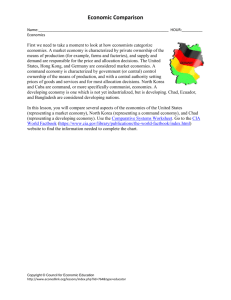1 - International Business courses
advertisement
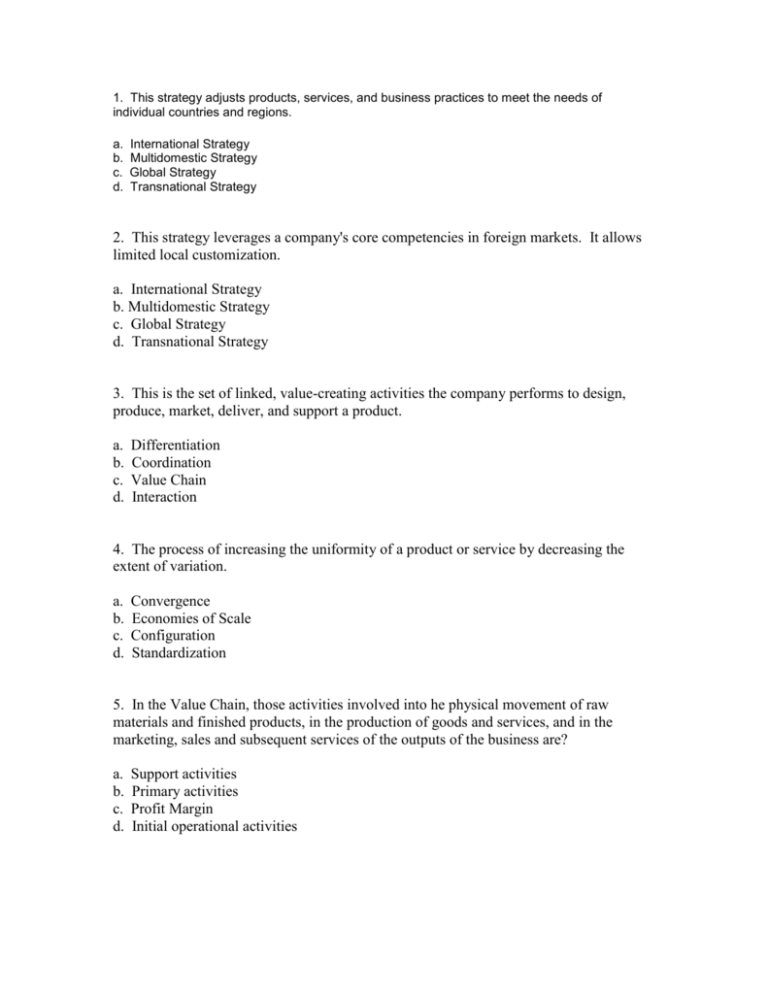
1. This strategy adjusts products, services, and business practices to meet the needs of individual countries and regions. a. b. c. d. International Strategy Multidomestic Strategy Global Strategy Transnational Strategy 2. This strategy leverages a company's core competencies in foreign markets. It allows limited local customization. a. International Strategy b. Multidomestic Strategy c. Global Strategy d. Transnational Strategy 3. This is the set of linked, value-creating activities the company performs to design, produce, market, deliver, and support a product. a. b. c. d. Differentiation Coordination Value Chain Interaction 4. The process of increasing the uniformity of a product or service by decreasing the extent of variation. a. b. c. d. Convergence Economies of Scale Configuration Standardization 5. In the Value Chain, those activities involved into he physical movement of raw materials and finished products, in the production of goods and services, and in the marketing, sales and subsequent services of the outputs of the business are? a. b. c. d. Support activities Primary activities Profit Margin Initial operational activities Answers 1. B 2. A 3. C 4. D 5. B Q1. ______ Is how companies obtain, produce, and exchange material and services in the proper place and in proper quantities for the proper value activity. A. Logistics B. Operations C. Support D. Manufacturing Q2. Which of the following factors does not influence value chain configuration? A. Cost Factors B. Economies of Scale C. Cluster Effects D. Social Environments Q3. Which of the following is not one of the industry structure changes due to events? A. Competitor’s moves B. Government Policies C. Rate of Market Growth D. Employment options Q4. Zara originates from what country? A. United States B. Japan C. Great Britain D. Spain Q5. How competitive forces shape strategy (or the _____ five forces) was written by who? A. Porter B. Smith C. Ricardo D. Darwin Answers: 1) A 2) D 3) D 4) D 5) A 1) Where was Zara first located? a) Andalucia b) Castilla c) Galicia d) Cataluña 2) Economies of scale are: a) Reproduction in unit cost achieved by producing a large volume of a product. b) Decrease in the unit cost of production associated with the increase in total output. c) a & b d) None of the above 3) Logistics is: a) How companies obtain, produce, and exchange material and services in the proper place and quantities for the proper value activity. b) How logic one company act before producing or outsourcing some internal service. c) Refers to the Just-in-time theory d) All the above 4) Core competence can emerge from which area: a) Product development b) Marketing imagination c) Executive leadership d) All the above 5) Foreign subsidiaries operate autonomous units to customize products and process to local market’s need. a) Multidomestic b) Global c) Transnational d) International Answers: 1) C 2) C 3) A 4) D 5) A Chapter 11 1.) How many “fundamental forces” are there? a.) b.) c.) d.) 4 3 5 6 2.) What is the company that has been very successful in international business and is based in Spain? a.) b.) c.) d.) Zara H&M Urban Outfitters Harrods 3.) What e-commerce business has been extremely successful in international business from the case study? a.) b.) c.) d.) amazon.com e-bay orbitz halfprice.com 4.) Economies of scale refers to the reductions in: a.) b.) c.) d.) unit cost achieved by producing a large volume of a product deciding which economies are large enough to sell a product unit cost achieved by producing a small volume of products deciding which economies are advanced enough to sell a product. 5.) Core competency is: a.) b.) c.) d.) The part of the company that is the core of all operations The level of competency that the CEO of the company possesses The unique skills and/or knowledge that is better than its competitors The company’s headquarters of all operations Answers: 1= c…..2=a…..3=b…..4=a……5=c
